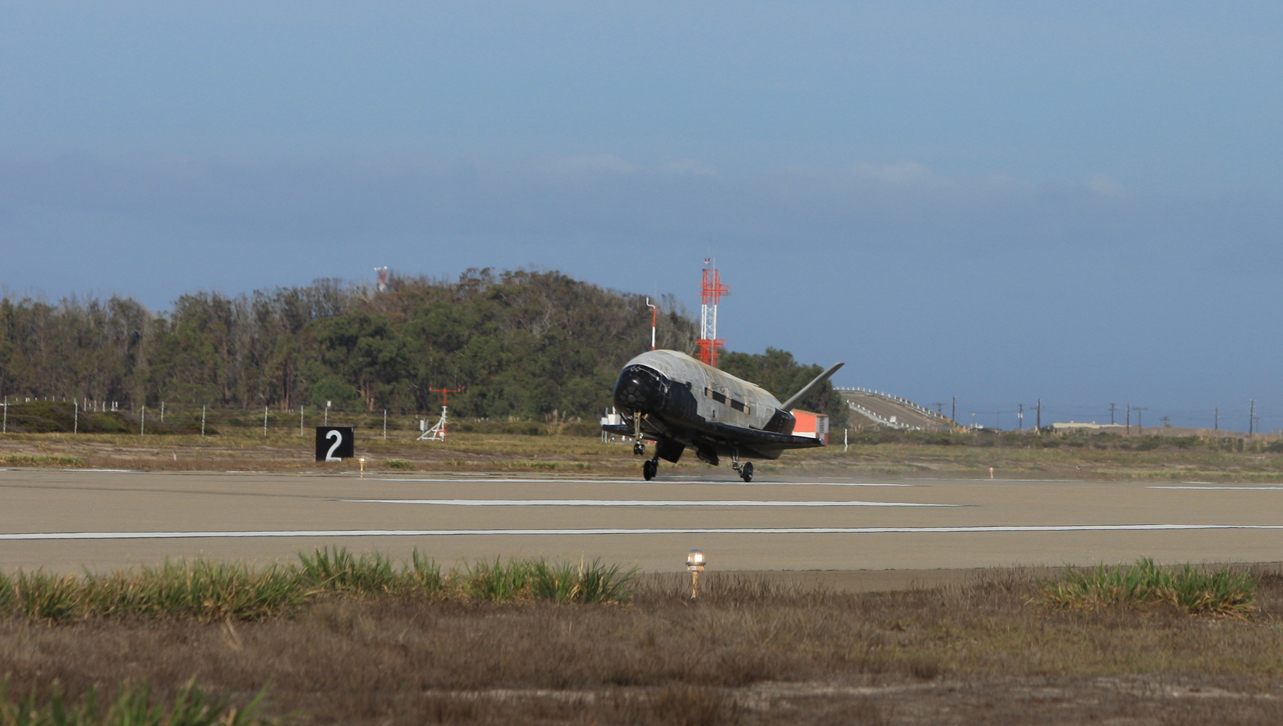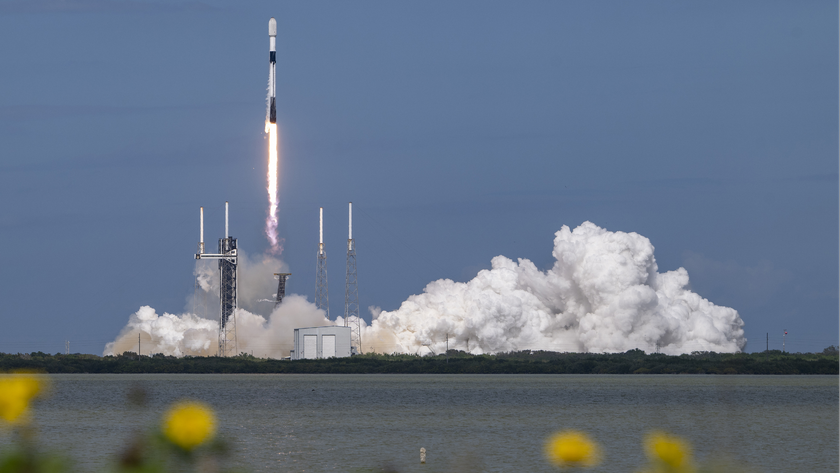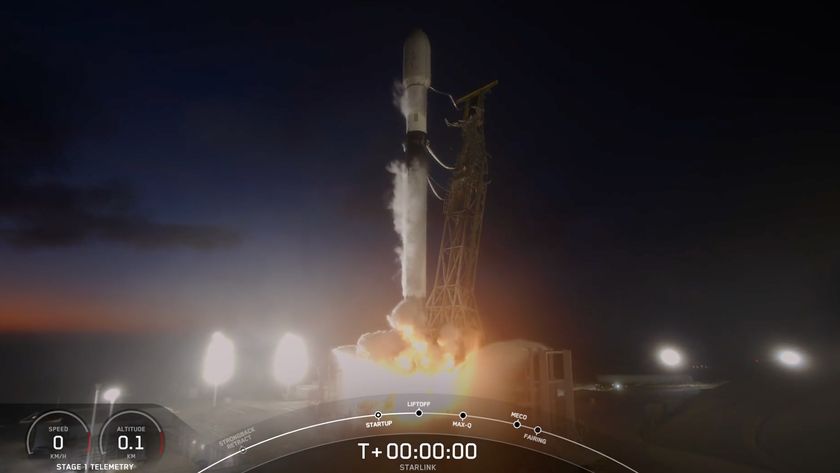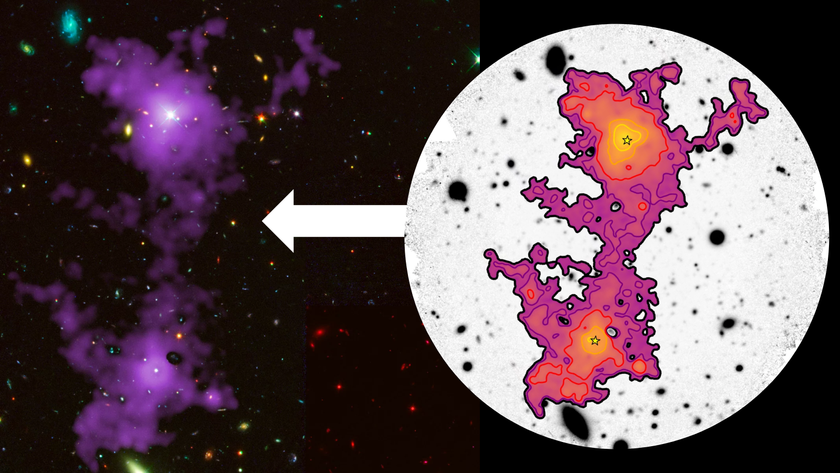
The U.S. Air Force's X-37B space plane has returned to Earth after spending nearly two years on a hush-hush orbital mission.
The X-37B space plane touched down at California's Vandenberg Air Force Base on Friday (Oct. 17) at 9:24 a.m. local Pacific time (12:24 p.m. EDT; 1624 GMT), ending a mission that kicked off in December 2012 and saw the unmanned vehicle circle Earth for an unprecedented 675 days.
"I'm extremely proud of our team for coming together to execute this third safe and successful landing," said Col. Keith Balts, commander of the 30th Space Wing, which is headquartered at Vandenberg, in a statement. "Everyone from our on-console space operators to our airfield managers and civil engineers take pride in this unique mission and exemplify excellence during its execution." [See photos from the X-37B mission]
Just what the space plane was doing up there for so long remains unclear; details about X-37B missions — including the payloads carried to orbit — are officially classified.
A robotic mini-shuttle
The X-37B looks like a miniature version of NASA's now-retired space shuttle. Like the shuttle, the robotic space plane launches vertically and glides back down to Earth for a runway landing when its time in space is done.
The X-37B is about 29 feet long by 9.5 feet tall (8.8 by 2.9 meters), with a wingspan of 15 feet (4.6 m) and a payload bay the size of a pickup-truck bed. Two X-37Bs could fit inside the payload bay of the space shuttle, which was 184 feet (56 m) long from nose to tail.
Get the Space.com Newsletter
Breaking space news, the latest updates on rocket launches, skywatching events and more!
The Air Force owns two X-37B space planes, both of which were built by Boeing's Phantom Works division. These two solar-powered spacecraft have flown a total of three missions, which are known as OTV-1, OTV-2 and OTV-3. ("OTV" stands for Orbital Test Vehicle.)
OTV-1 launched in April 2010 and touched down in December of that year, clocking 225 days in orbit. OTV-2, which employed a different X-37B, blasted off in March 2011 and circled Earth for 469 days. OTV-3 shattered this longevity record by more than 200 days, blasting off on Dec. 11, 2012, and sending the vehicle that flew OTV-1 back to space for 22 months.
Testing space tech
The secrecy surrounding the X-37B and its missions has led to some speculation that the vehicle may be a space weapon, perhaps designed to capture or disable other nations' satellites. But the Air Force insists that this is not the case, stressing that the X-37B is merely a test bed for space tech.
"The primary objectives of the X-37B are twofold: reusable spacecraft technologies for America's future in space, and operating experiments which can be returned to, and examined, on Earth," Air Force officials wrote in on online X-37B fact sheet.
"Technologies being tested in the program include advanced guidance, navigation and control; thermal protection systems; avionics; high-temperature structures and seals; conformal reusable insulation, lightweight electromechanical flight systems; and autonomous orbital flight, re-entry and landing," they added.
Experts generally agree with this assessment, saying the X-37B is not big or maneuverable enough to be a viable satellite-grabber.
"It was probably serving some sort of intelligence/surveillance/reconnaissance (ISR) function," Brian Weeden, a technical adviser with the Secure World Foundation and a former orbital analyst with the Air Force, said about OTV-3.
"And the secrecy surrounding the mission being performed by the X-37B suggests the mission was being done for the NRO, perhaps to test out and evaluate new sensor technologies or techniques," Weeden told Space.com via email, referring to the National Reconnaissance Office, which operates the United States' spy satellites.
Observations by amateur satellite spotters revealed that OTV-3 flew at a relatively low altitude (218 miles, or 350 kilometers) and ranged from 43.5 degrees north latitude to 43.5 degrees south latitude, Weeden noted.
"That means it wasn't collecting [information] on Russia, which is north of those latitudes," he said. "What does fall within the latitudes it covered are the Middle East, Afghanistan, Africa, Southeast Asia and Latin America, so its targets for collection were likely in those regions."
The fourth X-37B mission will launch sometime in 2015, Air Force officials said.
Follow Mike Wall on Twitter @michaeldwall and Google+. Follow us @Spacedotcom, Facebook or Google+. Originally published on Space.com.
Join our Space Forums to keep talking space on the latest missions, night sky and more! And if you have a news tip, correction or comment, let us know at: community@space.com.

Michael Wall is a Senior Space Writer with Space.com and joined the team in 2010. He primarily covers exoplanets, spaceflight and military space, but has been known to dabble in the space art beat. His book about the search for alien life, "Out There," was published on Nov. 13, 2018. Before becoming a science writer, Michael worked as a herpetologist and wildlife biologist. He has a Ph.D. in evolutionary biology from the University of Sydney, Australia, a bachelor's degree from the University of Arizona, and a graduate certificate in science writing from the University of California, Santa Cruz. To find out what his latest project is, you can follow Michael on Twitter.


